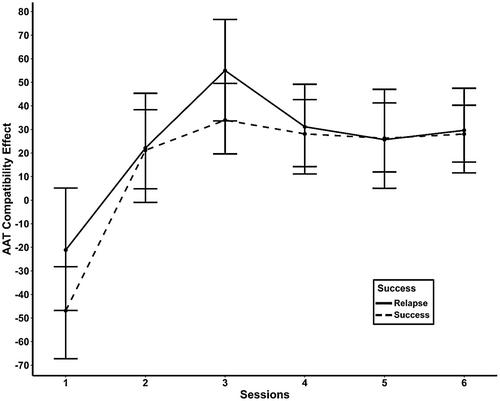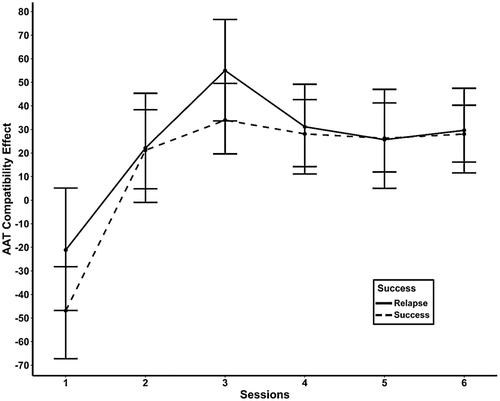Long-term effects of alcohol-avoidance training: Do changes in approach bias predict who will remain abstinent?
Abstract
Background
Patients with alcohol use disorder (AUD) tend to selectively approach alcohol cues in the environment, demonstrating an alcohol-approach bias. Alcohol-approach-bias modification (Alcohol-ApBM) effectively increases abstinence rates in patients with AUD when added to abstinence-focused treatment, but the evidence for its proposed working mechanism (reduction of the alcohol-approach bias) is limited. Moreover, not all patients benefit from Alcohol-ApBM, and previous research did not identify reliable pretreatment predictors of Alcohol-ApBM effectiveness. Therefore, the current study focused on learning processes during the Alcohol-ApBM training itself. Specifically, we examined whether changes in approach-avoidance tendencies over the course of Alcohol-ApBM would predict abstinence after inpatient treatment.
Methods
The training data of 543 AUD patients in Germany (70% male, M = 47.96, SD = 9.08), receiving Alcohol-ApBM training during inpatient treatment, were used to examine whether various aspects of learning during training predicted abstinence 1 year after treatment discharge, both separately and in interaction with potential sociodemographic and clinical moderators of Alcohol-ApBM effectiveness.
Results
Overall, successful learning across six Alcohol-ApBM training sessions was observed; that is, the approach tendency toward alcoholic stimuli was reduced over time. However, none of the examined learning parameters were predictive of abstinence, neither separately nor in combination with clinical or sociodemographic variables.
Conclusions
Previous studies have shown that Alcohol-ApBM is an effective add-on to abstinence-focused treatment for AUD, and this study showed that learning took place during Alcohol-ApBM training. However, specific learning parameters during training did not predict abstinence 1 year after treatment discharge. Therefore, we cannot specify which patients are most likely to benefit from ApBM with regard to abstinence after 1 year.



 求助内容:
求助内容: 应助结果提醒方式:
应助结果提醒方式:


